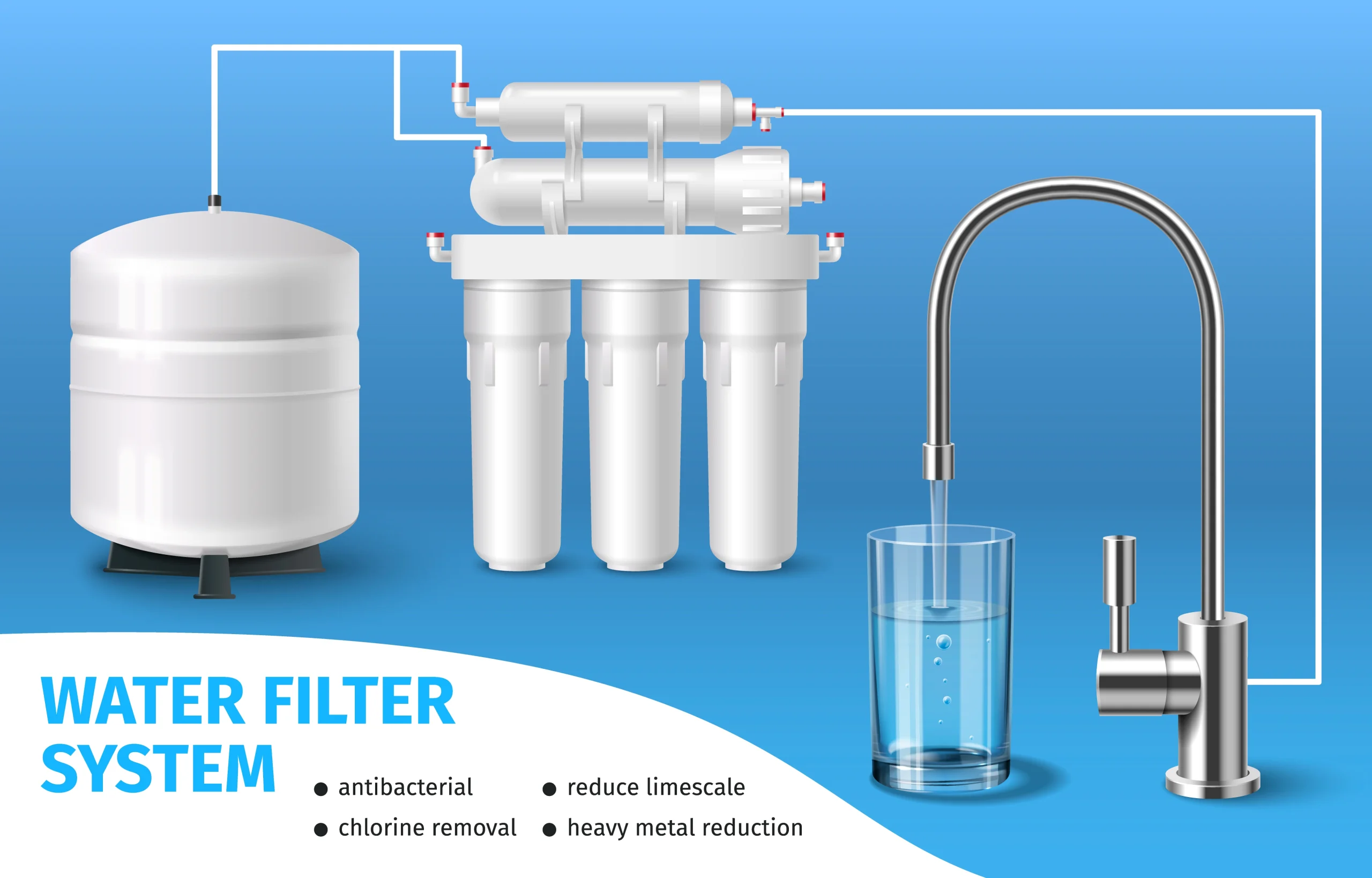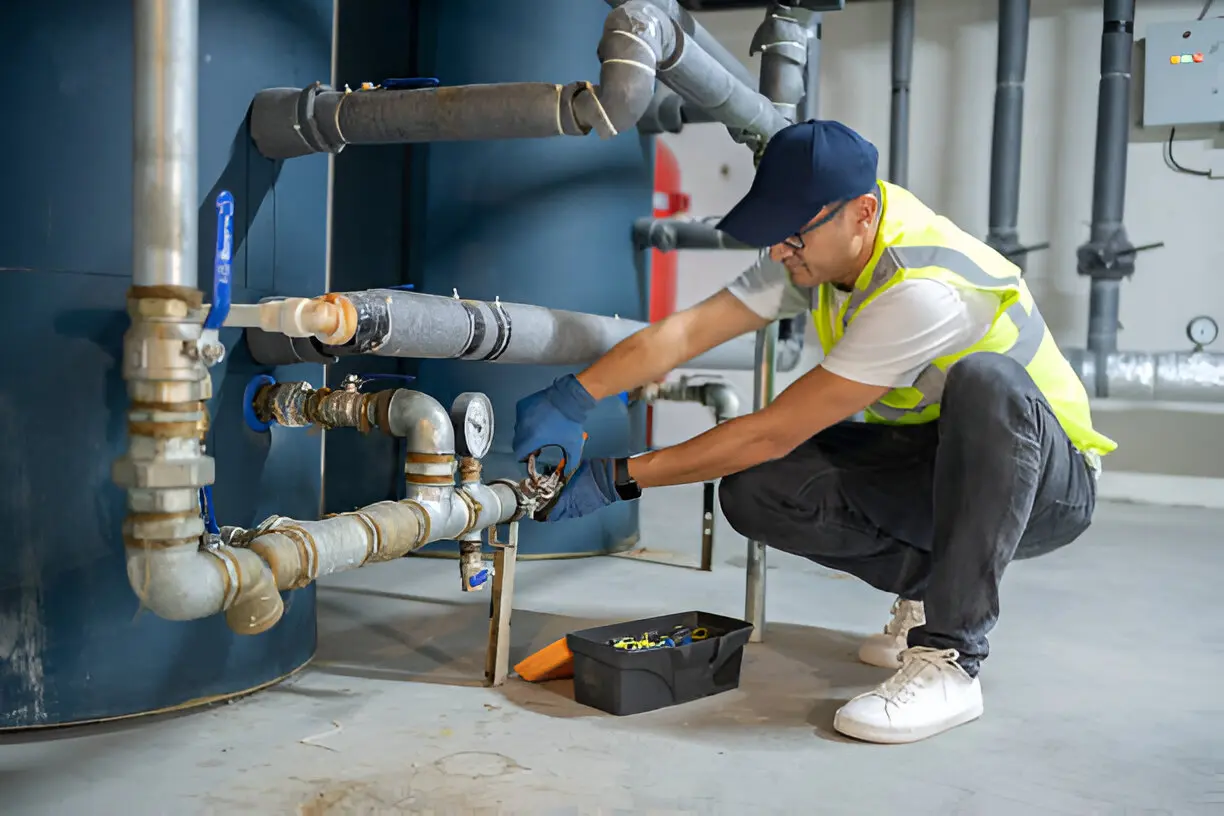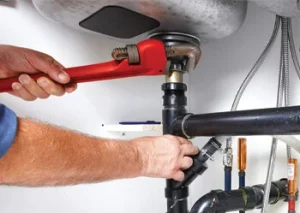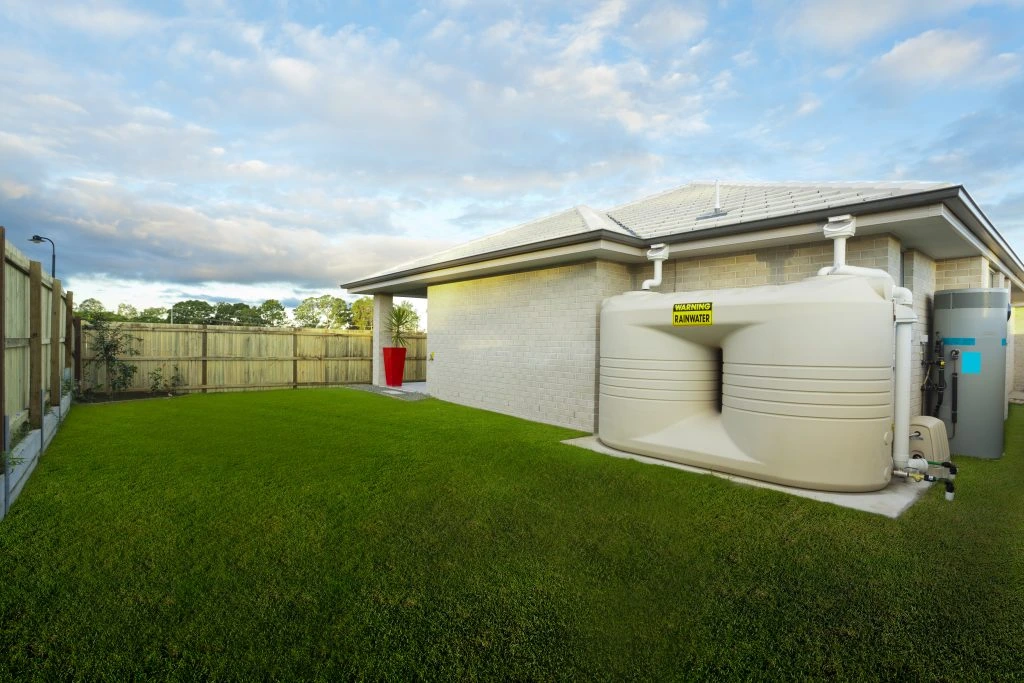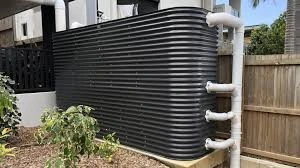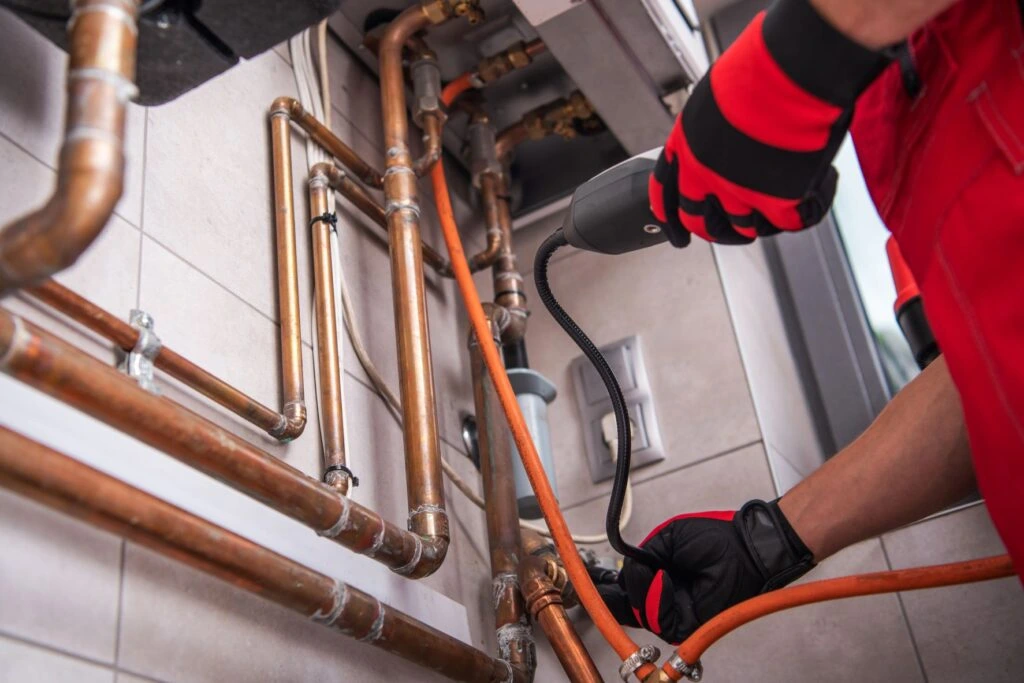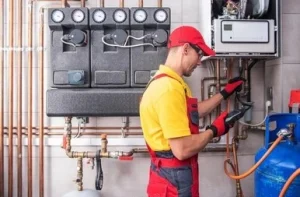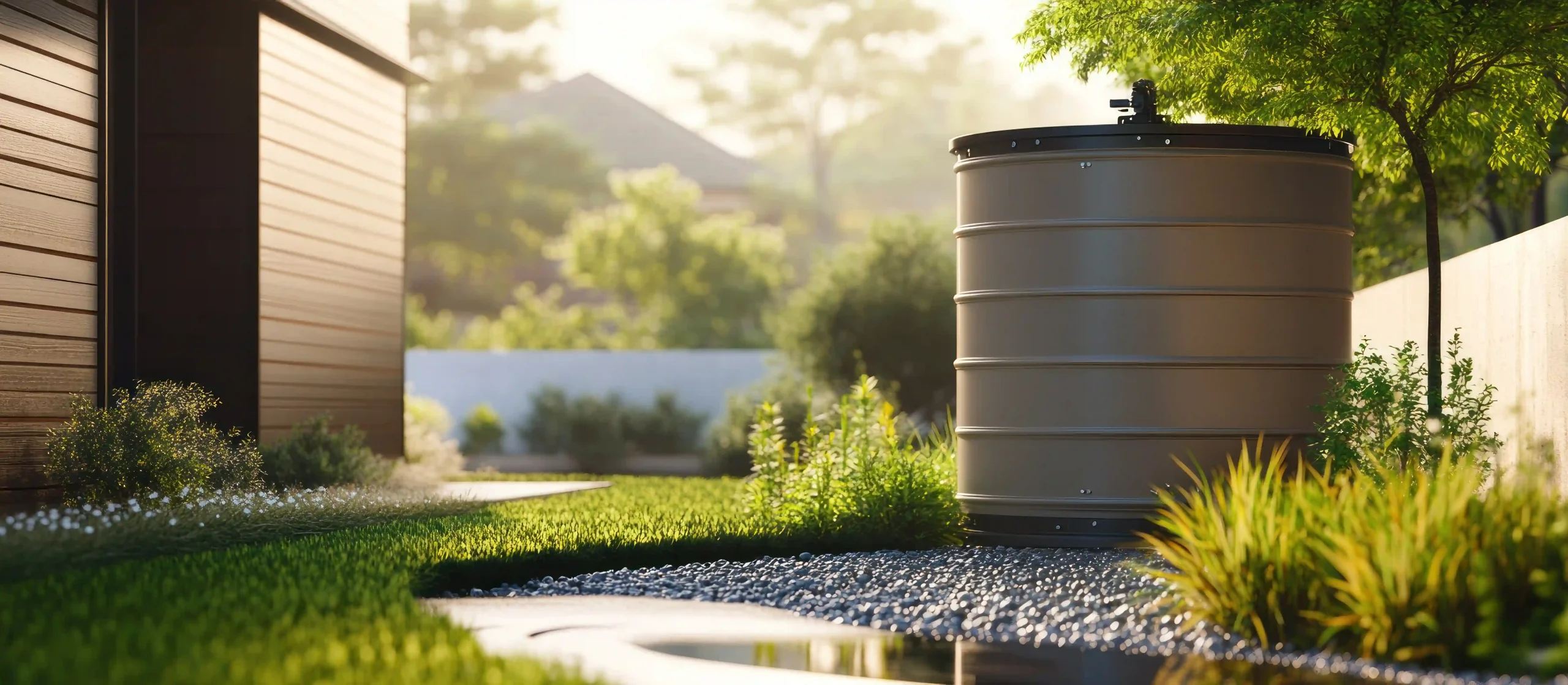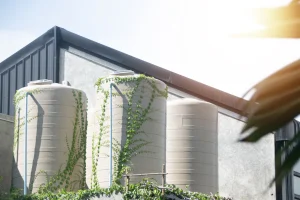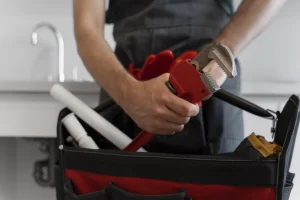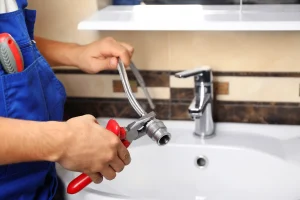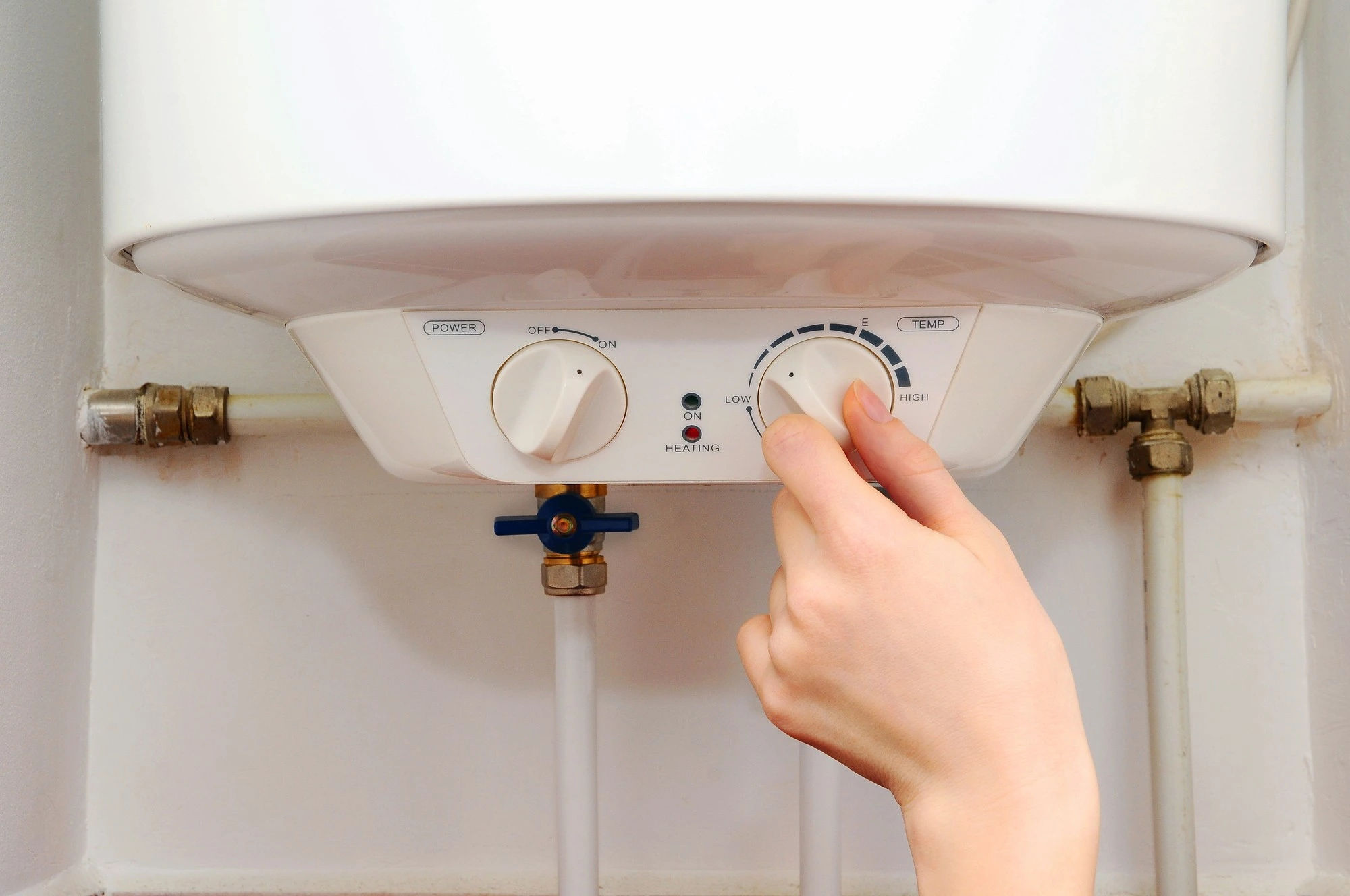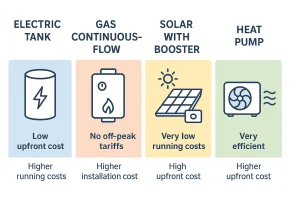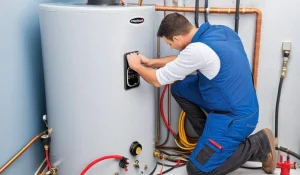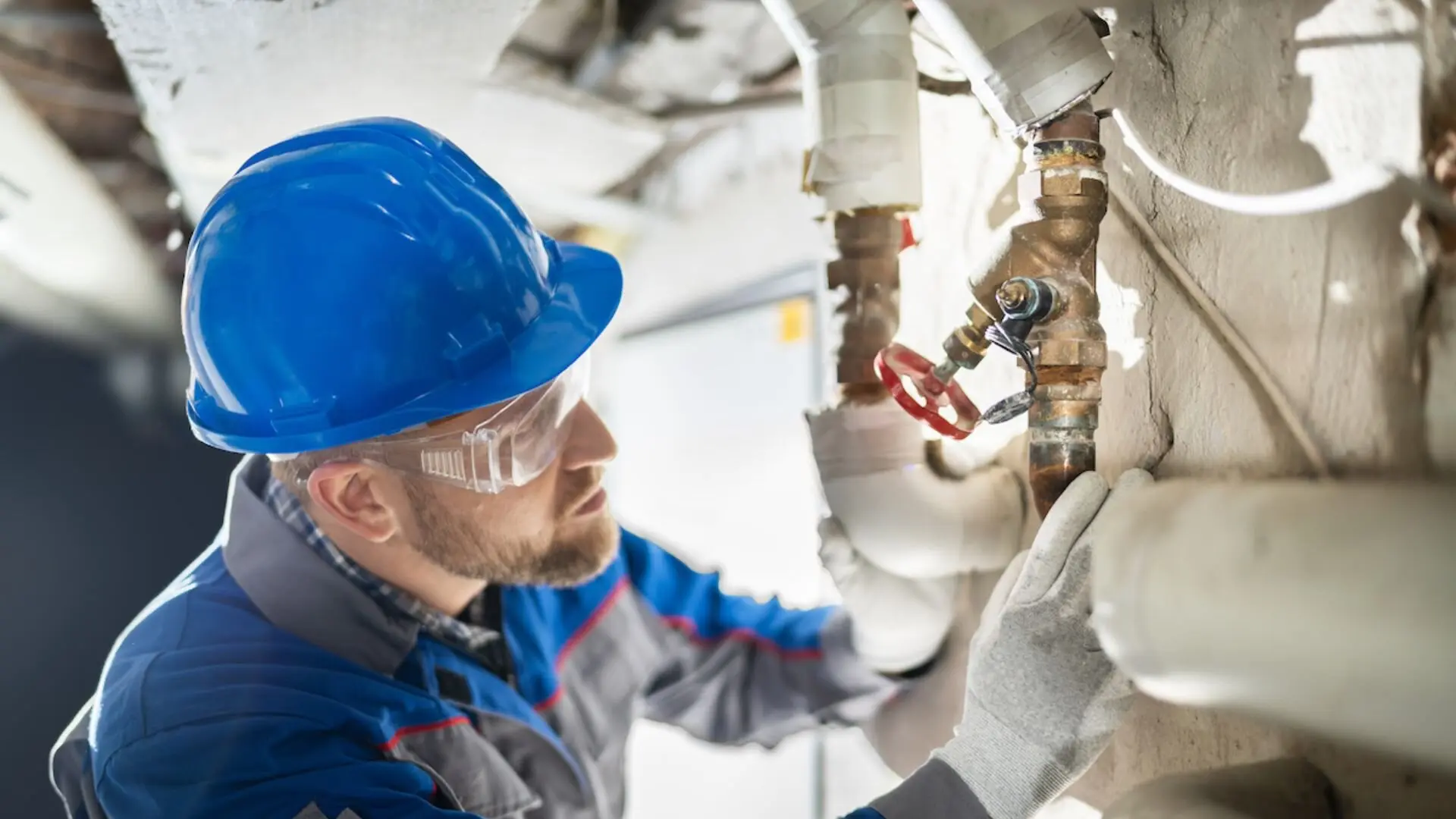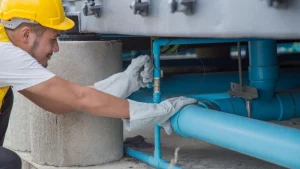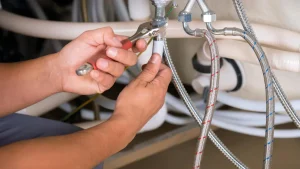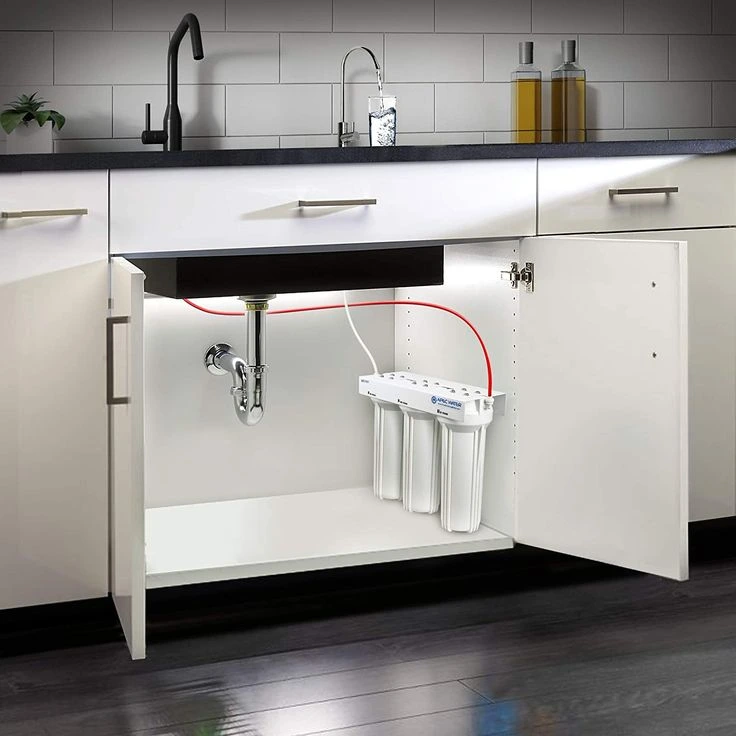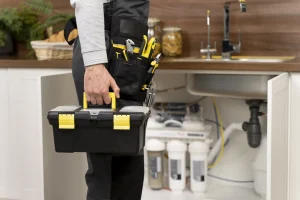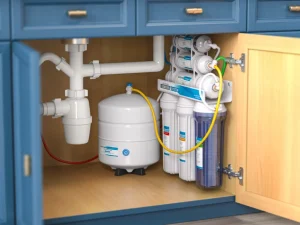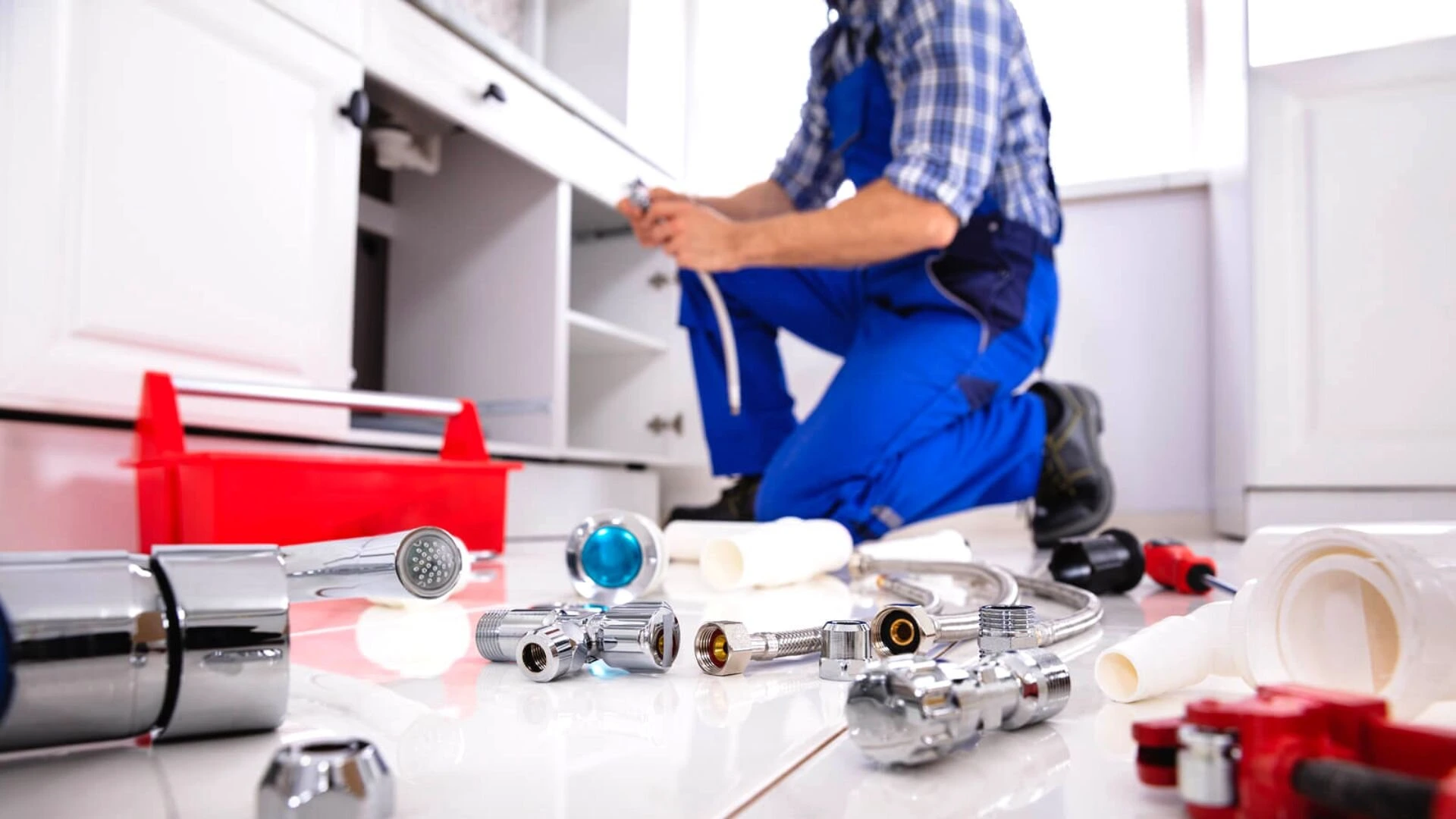Brisbane’s tap water is considered among the safest and cleanest in the world. Local water authorities, including Seqwater, treat and monitor supply to meet the strict Australian Drinking Water Guidelines . This ensures residents can safely drink water straight from the tap.
Still, many households and businesses choose to install Water Filtration Systems in Brisbane. Why? Because while tap water is safe, treatment processes often leave behind traces of chlorine, sediments, or minerals that affect taste and odour . Older pipes in some areas may also contribute to unwanted particles such as rust or metals.
Water filtration systems provide an extra layer of protection and comfort by removing impurities, improving taste, and extending the lifespan of household appliances. Whether in residential kitchens, cafés, or commercial facilities, filtration ensures better quality water for drinking, cooking, and everyday use.
In this guide, we’ll explain the types of water filtration systems available in Brisbane, their specific uses, and the advantages they bring for homes and businesses alike.
Why Filter Brisbane’s Water?
First things first: Is Brisbane’s tap water safe? Yes. Water authorities in Queensland add disinfectants like chlorine to kill germs and comply with the Australian Drinking Water Guidelines (a stringent national standard).
In fact, Seqwater – the state bulk-water supplier – says SE Queensland’s water quality meets those strict benchmarks. In short, you won’t get sick drinking our tap water.
However, those safety measures can leave behind tastes or traces you might not love. CHOICE explains that “safe drinking water requires additives you can often smell or taste, such as chlorine”.
Ever noticed that slight chlorine scent in tap water? It’s harmless but can make water taste a bit boring. That’s where a filter comes in: it can remove the smell, taste, or any fine particles, giving you crisp, clean-tasting water straight from the tap.
In Brisbane’s lifestyle scene, where you might brew artisanal coffee at home or host a Friday barbecue, having great-tasting water is just as important as a good album on the playlist.
Aside from taste, filters can cut out potential contaminants that even the best treatment might overlook – things like tiny sediment, heavy metals (lead, copper) leached from old pipes, or trace chemicals. And if you’re worried about “forever chemicals” (PFAS) or pesticides, some advanced systems can reduce those too.
In short, Water Filtration Systems in Brisbane are mostly about upgrading your tap water experience: better flavour, fewer surprises, and maybe fewer plastic bottles in your bin. Think of a filter as a bouncer for your water, catching the stuff you don’t want in, while letting through the good, clean H₂O.
(Insert image of a modern kitchen with a shiny tap and a glass of clear water on the counter)
Types of Water Filtration Systems
There’s no one-size-fits-all – water filters come in different styles. Below are common types of water filtration systems you’ll find in Brisbane homes and businesses, and what they do:
- Activated Carbon Filters: These use charcoal or coconut shell carbon. They adsorb (trap) chlorine, bad tastes, odors, and many chemicals. You’ll see them in pitcher filters, fridge filters, faucet-attached filters, and under-sink units. They’re affordable and great for everyday use. CHOICE notes that carbon (adsorption) filters “remove odour, taste and particles”.
- Reverse Osmosis (RO): A high-tech option that pushes water through a semipermeable membrane, blocking up to 99% of dissolved solids. RO can strip out heavy metals (lead, arsenic), nitrates, fluoride, salts, and even some PFAS. It gives ultra-purified water – basically turning Brisbane tap water into something like distilled.
The trade-off? It wastes some water (around 40–60% can be flushed away) and often requires a separate mini-faucet for the drinking water. RO systems are common under-sink or in tight spaces; breweries and labs also use them. - UV Purification: Ultraviolet filters zap microbes. If your water source has bacteria, viruses or parasites (unlikely in city mains, but possible in bore or tank water), a UV light unit will neutralize them. UV units are usually installed under the sink or at the point-of-entry for whole-house use.
Remember, UV works only on clear water – it won’t remove dirt or chemicals, so it’s often paired with a sediment pre-filter. - Ion Exchange (Water Softeners): Technically for “hard water” – these systems swap out calcium and magnesium (which cause scale) for sodium or potassium. If your Brisbane suburb has hard water (some do), a softener can protect pipes and make soaps lather better. It’s a specific use-case filter, not for toxins.
- Sediment Filters: These are simple mesh or pleated filters that catch dirt, rust, sand and other particles. You’ll find them as a first stage in many multi-filter setups, or in rainwater tank systems. They make sure downstream filters don’t clog too fast.
- Distillers (much less common): They boil water and re-condense it, removing most contaminants. Good for super-pure needs, but they are energy-guzzlers and slow.
- Whole-House Systems vs Point-of-Use: A whole-house (point-of-entry) system sits at the main water line and treats all water entering your home – perfect if you have multiple taps, showers, and appliances you want to protect. Conversely, point-of-use systems (under-sink units, tap filters, pitchers) only treat water at a specific faucet.
Most Brisbane apartments use point-of-use filters for drinking/cooking, while some houses opt for a whole-home filter so even showers and laundry use soft, filtered water.
To compare key types at a glance, here’s a handy table:
| Filter Type | Removes | Best Use Case |
| Carbon Filter (adsorption) | Chlorine, sediment, many chemicals (VOCs), bad tastes/odors | Under-sink, fridge or pitcher filters for drinking water |
| Reverse Osmosis | Heavy metals (lead, arsenic), fluoride, nitrates, salts, some PFAS | Dedicated drinking water taps (e.g. kitchen), aquariums, labs |
| UV Sterilizer | Bacteria, viruses, parasites | Well or tank water; under-sink for microbe disinfection |
| Ion Exchange (Softener) | Hardness minerals (calcium, magnesium) | Whole-house systems to prevent scale in pipes/appliances |
| Sediment Filter | Rust, sand, dirt particles | Pre-filter in any system; rainwater or bore water lines |
Residential vs Commercial Systems
Homes: In Brisbane residences, the usual suspects are pitcher filters, faucet/tap-mounted filters, and under-sink RO or carbon systems. Young professionals might grab a stylish stainless-steel filter jug or plumb in an under-sink filter for their gourmet coffee water. Whole-house filters (often carbon or softeners) are less common in apartments, but some family homes install them for every tap, especially if local water hardness is high.
Businesses: Think on a larger scale. Cafés, restaurants and offices might install point-of-entry units or larger-capacity RO systems to serve many people. For example, a trendy riverside café in West End might have a big RO unit for its espresso machine and ice maker (customers expect perfect taste). Hotels or hospitals use industrial-grade purifiers to meet strict hygiene needs.
In commercial setups, water filters also serve machines – protecting dishwashers, boilers, and cooling systems from scale or corrosion.
Whether it’s a small coffee shop or a high-rise apartment block, the principle is the same: filter out unwanted stuff to keep water delicious and equipment happy. And in Brisbane’s humid climate, removing chlorine and sediment can also prevent that musty taste and keep showers feeling fresh.
Uses and Applications
Where do you actually use filtered water? Here are some everyday scenarios:
- Drinking & Cooking: The most obvious. Filtered water makes tea and coffee taste better, soup clearer, and plain water fresher. If you (or your barista friend) are pouring an espresso, pure water can enhance the bean’s character.
- Home Appliances: Installing a filter or softener helps dishwashers, washing machines, and water heaters. For instance, a water softener in Brisbane (if you have hard water) can extend the life of your kettle by reducing scale build-up.
- Baths & Showers: Some people fit shower filters to cut chlorine – it means gentler water for skin and hair. Fancy spas and gyms do this for a luxe feel.
- Gardening and Aquariums: Clean water keeps plants and fish healthy. (Though aquarium hobbyists often use RO water to start their fish tanks to avoid chlorine and minerals that harm fish.)
- Commercial & Industrial: As mentioned, businesses use filtered water for food prep, coffee machines, ice makers, lab experiments, or even cooling towers. Large plants treat water chemically, but standalone filters add a layer of confidence.
- Health & Lab Use: In healthcare or lab settings, filters ensure water meets exact standards. Even at home, parents might want purified water for baby formula – some pediatricians suggest filtering to reduce nitrates or fluoride to appropriate levels.
- Recreational (Travel): Aussies love road trips! Portable filters (like squeeze pouches or travel jugs) can purify collected rain or creek water when you’re bush camping outside Brisbane. If you have a rainwater tank at home, filters become essential for safe drinking.
In all these cases, Water Filtration Systems in Brisbane serve to either improve comfort (better tasting coffee) or safeguard health (removing pathogens or pollutants).
Advantages of Using a Water Filter
Why go through the hassle of installing a filter? Here are the top perks, laid out plainly (with a bit of wit):
- Better Taste & Odour: No more sniffing chlorine! Filters give you crisp, fresh-tasting water. You might finally enjoy water on its own without lemon wedges. (Yes, you’ll drink more water – imagine how hydrated you could be.)
- Health & Safety: Filtering can remove heavy metals and chemicals, lowering long-term risks. It also can eliminate microscopic nasties in rare cases (a UV filter kills them instantly). CHOICE reminds us that while treated water is safe, filters add an extra layer of protection, especially for families with kids or immune-compromised members.
- Eco-Friendly: Cut down on single-use bottles. Brisbane council loves recycling, but imagine the impact if more of us just drank from the tap! A home filter pays for itself (and saves plastic) after a relatively small use.
- Cost Savings: Once installed, filtered tap water is much cheaper per litre than bottled water. The biggest cost is periodic filter changes – still usually less than buying premium bottled water every week.
- Convenience: Instant filtered water from the tap means no more refilling heavy jugs from store. For busy city folk, this is a simple lifestyle upgrade.
- Protect Appliances and Plumbing: Scale and rust get caught in filters, so your pipes, irons, and kettles might last longer. Think of it as a bodyguard for your kitchen hardware.
- Peace of Mind: Even though Brisbane’s water is top-notch, knowing you have an extra safety net is comforting. It’s like having health insurance for your water.
By choosing the right system, you tailor these benefits to your needs. For example, if chemical runoff (pesticides) is a local concern, a carbon/RO combo will target that. If you’re in a heritage house with old lead pipes, filtering out heavy metals is wise. In short, filtration brings confidence and comfort to water use in Brisbane homes and offices.
Choosing and Maintaining Your System
Picking a filter is a bit like choosing a new smartphone – there are models for every budget and need:
- Identify what you want removed. Is it mainly chlorine and taste? Then a carbon filter or basic under-sink unit will do. Concerned about hard water scale? Consider a softener. Need pure H₂O (for brewing or medical use)? Look at RO or distillers. A simple water test (available online or from councils) can pinpoint any problems with your tap water.
- Consider capacity and flow. A pitcher filter is cheap but only produces a few glasses before refilling. Under-sink and whole-house filters handle larger volumes at the flip of a tap. Match it to your usage: single person vs. a houseful of thirsty mates, or a coffee shop vs a small home kitchen.
- Check Certifications. For true performance, look for systems certified to Australian or NSF standards. These tests verify a filter removes what it claims.
- Installation and Maintenance. Some filters you DIY (pitchers, some tap mounts). Others need plumbers (whole-house units, RO hookups). All filters need regular cartridge changes – typically every 3–12 months depending on use. Set a reminder on your calendar or phone. A forgotten old filter can become counterproductive (spent cartridges can harbor bacteria).
- Budget. Costs range from ~$50 for a pitcher to several hundred for under-sink units, up to a few thousand for whole-house systems. Remember to factor in ongoing filter replacements. Balance upfront cost with longevity and quality.
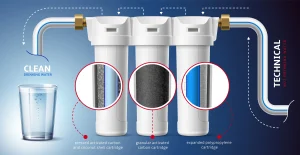
Conclusion
Water is literally the source of life, and Water Filtration Systems in Brisbane give you control over what’s in that life-sustaining sip. Our city’s water is already excellent by Australian standards, but a good filter can turn fine into fabulous – better taste, fewer impurities, and extra confidence that every glass is as clean as can be.
Whether it’s a chic under-sink filter in your New Farm apartment or a heavy-duty RO system for a corner café, understanding the types, uses and advantages is key. Choose wisely, follow the simple upkeep, and you’ll be well-hydrated with some bonus peace of mind.
Ready to upgrade your water? Explore options and maybe make that investment in a filter – your tastebuds (and plumber) might just thank you. Feel free to share this guide or your own filtration stories, and cheers to crisp, clean water in Brisbane!
Frequently Asked Questions
Do I really need a water filter for Brisbane tap water?
Generally Brisbane tap water is safe and meets guidelines. A filter is optional – mainly used to improve taste (remove chlorine) or target specific contaminants for extra peace of mind.
What types of water filters can I install at home?
Common options include activated carbon filters (pitchers, under-sink taps), reverse osmosis units, UV purifiers, water softeners, and whole-house systems. Each has its pros: carbon filters improve taste, RO removes many minerals, UV kills microbes.
How often do I need to replace the filter cartridge?
It depends on usage and filter type. Many cartridges last 3–6 months for a family; some heavy-duty filters run 6–12 months. Check the manufacturer’s guideline and replace on schedule to keep your system working well.
Can water filters remove all contaminants like lead or PFAS?
Some advanced filters (RO and certain carbon systems) can reduce heavy metals (lead, copper) and PFAS. No filter removes everything, so match the filter to your needs and certifications. For example, RO membranes remove a wide range of contaminants.
What’s the difference between a whole-house filter and an under-sink filter?
A whole-house system treats all water entering your property (all taps and showers). An under-sink or countertop filter only treats water from a single faucet. Whole-house protects plumbing and appliances; point-of-use is usually cheaper and only used for drinking/cooking.
Are filtered water bottles or pitchers effective?
Yes, they use activated carbon to improve taste and catch some contaminants. They’re convenient and portable, though slower and needing frequent refills. They’re a good starter solution if you rent or want a quick taste upgrade.
How do I know if my tap water has problems?
If water looks odd (brown, cloudy), smells, or leaves stains, there might be an issue. Check official reports (water supplier websites) and test kits for specific contaminants. Often you can just replace/clean old pipes or flush the system; if concerns remain, a filter can help filter out discoloration or rust.


